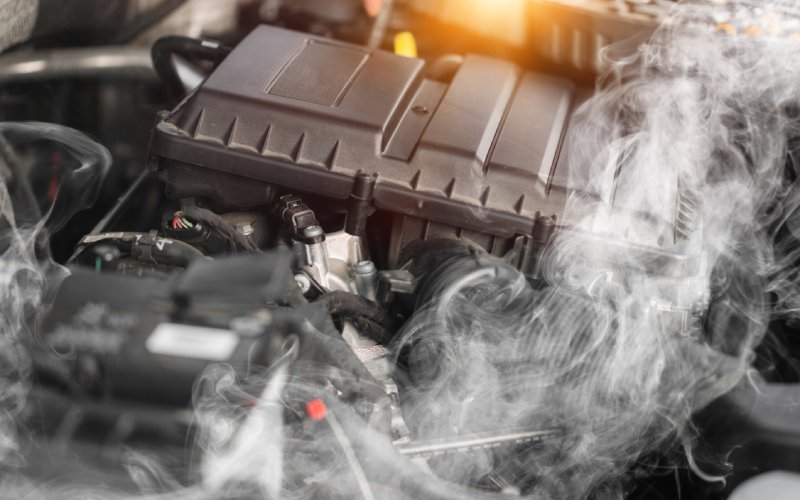How To Identify and Solve Common Engine Problems

Your engine is the most important part of your vehicle because you won’t be able to do much without it. The roar of the engine pushes us forward on daily journeys and thrilling races. For auto enthusiasts and racers, keeping an engine running smoothly is a passion.
Unfortunately, it’s impossible to keep an engine running without encountering a few complications! Driven Racing Oil will explain how to identify and solve common engine problems that you’ll likely encounter. The faster you can identify these issues, the sooner you can fix them.
Understanding Engine Misfires
An engine misfire is one of the most alarming issues for any driver. This loud sound generally happens when one or more of an engine’s cylinders aren’t producing enough power. Misfires can make your car feel rough or hesitant while driving, particularly during acceleration, and you may notice unusual vibrations.
Faulty spark plugs, damaged ignition coils, clogged fuel injectors, or an imbalance in the air-to-fuel mixture can cause an engine misfire. Begin by inspecting your spark plugs—they are often the root of misfire problems. If they appear worn or damaged, replacing them may resolve the issue. If the plugs seem fine, investigate the ignition coil and fuel system next.
Addressing Overheating Engines
If you notice your engine is overheating, stop driving as soon as possible and cut the ignition. Overheating can lead to severe damage if you don’t stop it right away. Common causes of overheating include a malfunctioning radiator, coolant leaks, a failing thermostat, or a worn-out water pump.
If you notice the engine temperature gauge rising or steam billowing from beneath the hood, pull over safely and allow the engine to cool down before investigating. After the engine has cooled, check the coolant levels. Low coolant may indicate a leak. Next, inspect the radiator and hoses for damage. A thermostat stuck in the closed position can also prevent coolant from circulating, leading to overheating. Replacing these faulty components promptly can prevent further damage.

Diagnosing Unusual Engine Noises
Strange noises—knocking, ticking, or squealing—aren’t just annoying; these common indicators hint that there’s a problem with your vehicle’s engine. Knocking noises often signal pre-ignition problems, which can occur due to using incorrect fuel or a buildup of carbon in the cylinders. Ticking sounds may point to problems with the valvetrain, while squealing can imply a loose or worn-out belt.
Start by identifying where the noise is coming from and under what circumstances it occurs—whether during idle, acceleration, or high speeds. After narrowing down the type of sound, focus on the components in that area. For example, if the sound seems to be coming from belts, you may need to replace them. If you suspect the problem is with ignition, you can adjust the ignition timing or switch to a higher-octane fuel.
Resolving Oil Leaks
Oil leaks create a mess, compromise engine performance, and lead to long-term internal damage. They commonly stem from worn gaskets, a damaged oil pan, or improperly installed filters.
To identify an oil leak, look for oil around seals and gaskets in the engine bay. The area around the oil pan and the valve cover gasket are typical culprits. After finding the source of the leak, you can replace the faulty component. Sealing it usually resolves the issue. Make a habit of regularly checking motor oil levels to protect your vehicle’s engine.
Handling Reduced Engine Power
When identifying and solving common engine problems, you may notice sluggish performance, difficulty accelerating, or a reduced power output. Restricted airflow, insufficient fuel delivery, or sensor issues may reduce engine power.
A dirty or clogged air filter restricts air intake and reduces combustion efficiency. It can also limit fuel flow to the engine, leading to similar symptoms. Inspect and replace both filters if necessary. Additionally, issues with the mass airflow sensor (MAF) or throttle position sensor (TPS) can negatively affect performance. Always test and replace malfunctioning sensors to restore full engine power.
Troubleshooting Starting Issues
Nobody wants to deal with an engine that won’t start or one that struggles to get going. A dead battery, faulty starter motor, or failing fuel pump can cause this problem. Begin troubleshooting the battery. Jump-starting the vehicle may resolve the issue temporarily, but you should test and replace a weak battery.
If the battery is in good condition, focus on the starter motor and fuel pump. Pay attention to whether you hear a clicking sound when activating the ignition (a possible starter motor issue) or no sound at all, which may indicate a fuel pump failure.

Fixing Fuel Economy Problems
A sudden drop in fuel efficiency is a telltale sign that something may be wrong with your vehicle’s engine. This issue might stem from faulty oxygen sensors, under-inflated tires, or problems with the fuel or air intake system.
Replacing faulty oxygen sensors helps the engine produce the appropriate air-to-fuel mixture for combustion. In order to improve mileage, you should inflate the tires to the recommended psi and keep the fuel lines and air filters free of obstructions. You can generally avoid this problem and maintain optimal fuel economy by giving your vehicles’ engine regular tune-ups.
Preventing Excessive Exhaust Smoke
Thick smoke coming from the exhaust can indicate serious problems under the hood. The color of the smoke offers clues about the source of the issue. Black smoke indicates an unbalanced air-to-fuel mixture, clogged injectors, or a faulty sensor. Blue smoke points to oil burning inside the engine, which could mean worn valve seals or piston rings. White smoke may indicate coolant leaking into the combustion chambers due to a blown head gasket. Addressing these issues promptly can prevent further damage to your vehicle’s engine.
For optimal engine performance and longevity, trust Driven Racing Oil, one of the leading racing oil brands in the industry! Our high-quality oils and lubricants meet the demands of high-performance engines, providing maximum protection and performance. Don’t compromise on the health of your engine; choose Driven Racing Oil for the ultimate driving experience. Visit our website to explore our full range of products, and give your engine the care it deserves.

You must login to post comments.